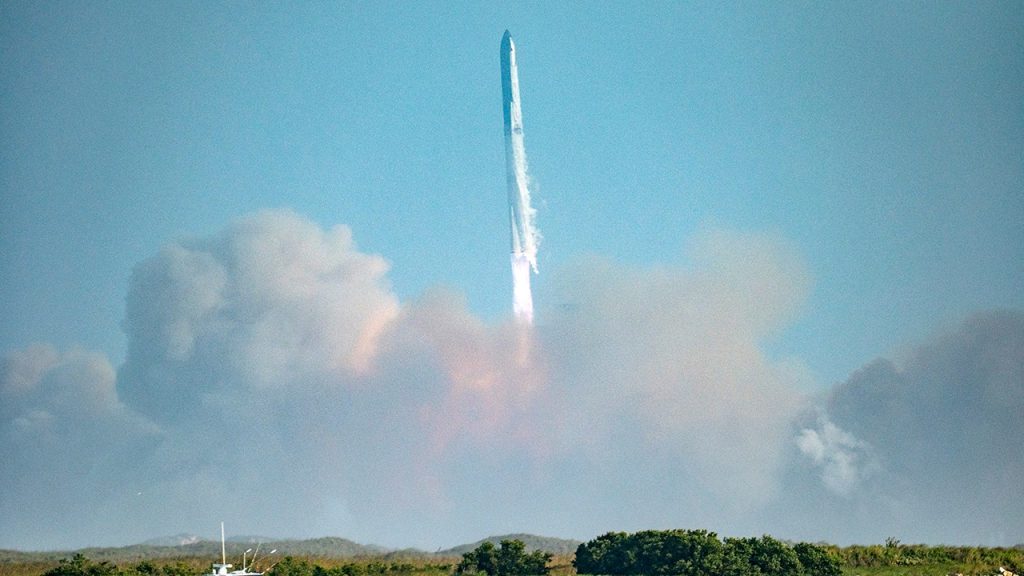On May 27, 2025, SpaceX’s ninth test flight of its Starship spacecraft launched from the company’s Starbase facility in Texas but unfortunately ended in failure shortly after liftoff. The mission intended to deploy eight Starlink simulator satellites and conduct a crucial reentry system test, but complications arose when the spacecraft began spinning uncontrollably due to a fuel system leak. Despite initial successes, including a successful launch and ascent, the flight culminated with an uncontrolled reentry, leading SpaceX to acknowledge the setback while reiterating its commitment to learning from each test.
| Article Subheadings |
|---|
| 1) Mission Overview and Objectives |
| 2) Flight Details and Technical Failures |
| 3) SpaceX’s Response and Future Plans |
| 4) Regulatory Oversight and Investigative Actions |
| 5) Broader Implications for Space Exploration |
Mission Overview and Objectives
The latest flight, designated as SpaceX’s ninth Starship test, was a significant attempt to further the company’s goal of creating a fully reusable spacecraft capable of transforming space travel. This particular mission aimed not only to launch eight Starlink simulator satellites but also to test the spacecraft’s advanced reentry system with the intention of examining how the vehicle would perform under different conditions. Specifically, the mission tested Starship’s ability to handle reentry without the protection of 100 out of its heat-shield tiles, which were deliberately removed to simulate potential real-world usage scenarios where tiles might either fail or not be present. The mission marks a progressive step in SpaceX’s ambitious plans to explore Mars and beyond, reflecting a commitment to innovation in aerospace technology.
Flight Details and Technical Failures
The flight commenced with a successful launch, and early course corrections seemed promising. However, shortly after reaching space, the mission took a turn for the worse when SpaceX mission control reported a fuel system leak. This leakage led to an uncontrollable spin, which ultimately caused the spacecraft to fail to perform critical operations necessary for a successful mission. The booster stage, which plays a crucial role during reentry, was lost during its return to the atmosphere, compounding the mission’s difficulties. Furthermore, the failure of the payload door to open at the appropriate time prevented the deployment of the intended satellites, illustrating a need for further internal reviews and adjustments.
SpaceX’s Response and Future Plans
In the aftermath of the incident, Elon Musk, CEO of SpaceX, took to social media to express a nuanced perspective on the test flying. He noted the mission reached the scheduled ship engine cutoff, categorizing it as a ‘big improvement’ over the previous test. SpaceX, in an official statement, reiterated its philosophy that every test is a learning opportunity. “With a test like this, success comes from what we learn,” the statement read. Going forward, the company has not specified an exact timeline for its next flight but has indicated that it plans to refine the Starship’s platform based on data extracted from this recent setback. Continuous testing will be essential for improving reliability as SpaceX aims for its eventual goals of making life multiplanetary.
Regulatory Oversight and Investigative Actions
The incident raised red flags and garnered the attention of regulatory bodies, notably the Federal Aviation Administration (FAA). Following the failed flight, the FAA confirmed it was conducting an investigation to ascertain the cause of the failure and evaluate any repercussions for future launches. In a statement, the FAA remarked, “The FAA is aware that an anomaly occurred during the SpaceX Starship Flight 9 mission and is actively working with SpaceX on the event. There are no reports of public injury or damage to public property at this time.” The investigation is crucial not only for compliance and safety regulations but also for maintaining public trust in commercial spaceflight.
Broader Implications for Space Exploration
The outcome of this flight, as disappointing as it may appear, is part of the iterative process that characterizes pioneering technological endeavors. As space exploration continues to advance, failures like these contribute invaluable lessons that help firms refine their technologies. SpaceX aims to create not just a vehicle for commercial launches but also a platform for human exploration of Mars. Each setback thus serves as a building block for future successes in ensuring greater reliability and safety in reusable rocket technology, encouraging the industry to push boundaries in aeronautics and astronautics.
| No. | Key Points |
|---|---|
| 1 | The ninth test of SpaceX’s Starship ended in failure due to a fuel system leak. |
| 2 | The mission aimed to deploy eight Starlink simulator satellites and test reentry systems. |
| 3 | SpaceX acknowledges that learning from failures is essential for future improvements. |
| 4 | The FAA is investigating the incident to determine its causes and impacts. |
| 5 | Failures are viewed as crucial learning experiences that contribute to future technological advancements. |
Summary
The failed test of SpaceX’s Starship spacecraft on May 27 demonstrates the challenges inherent in aerospace innovation. While the mission did not achieve its objectives, it provides essential data that will inform future tests. As SpaceX continues to push the boundaries of space exploration, the lessons gleaned from such failures are critical to improving safety and ensuring the viability of its ambitious plans for human colonization of other planets.
Frequently Asked Questions
Question: What objectives did SpaceX aim to achieve during the Starship test flight?
The primary objectives included deploying eight Starlink simulator satellites and testing the reentry system without several heat-shield tiles to study vehicle endurance during a potential real-world scenario.
Question: What caused the failure during the Starship flight?
The failure was primarily attributed to a fuel system leak that led to the spacecraft spinning uncontrollably, ultimately resulting in an uncontrolled reentry.
Question: How will SpaceX utilize the data from this failed mission?
SpaceX intends to leverage the data collected from this flight to refine the Starship system for improved reliability in future missions, emphasizing the iterative nature of developmental testing.
